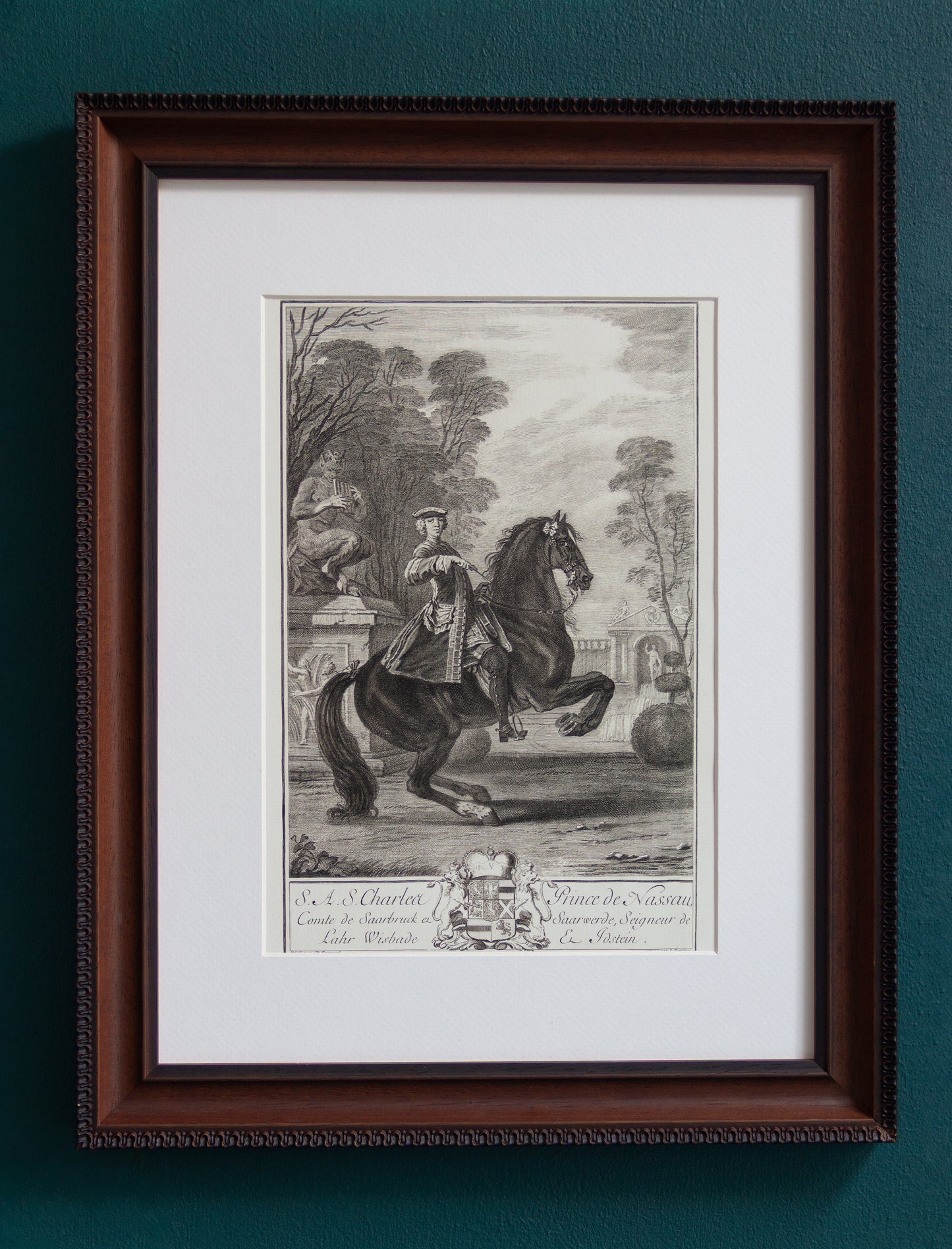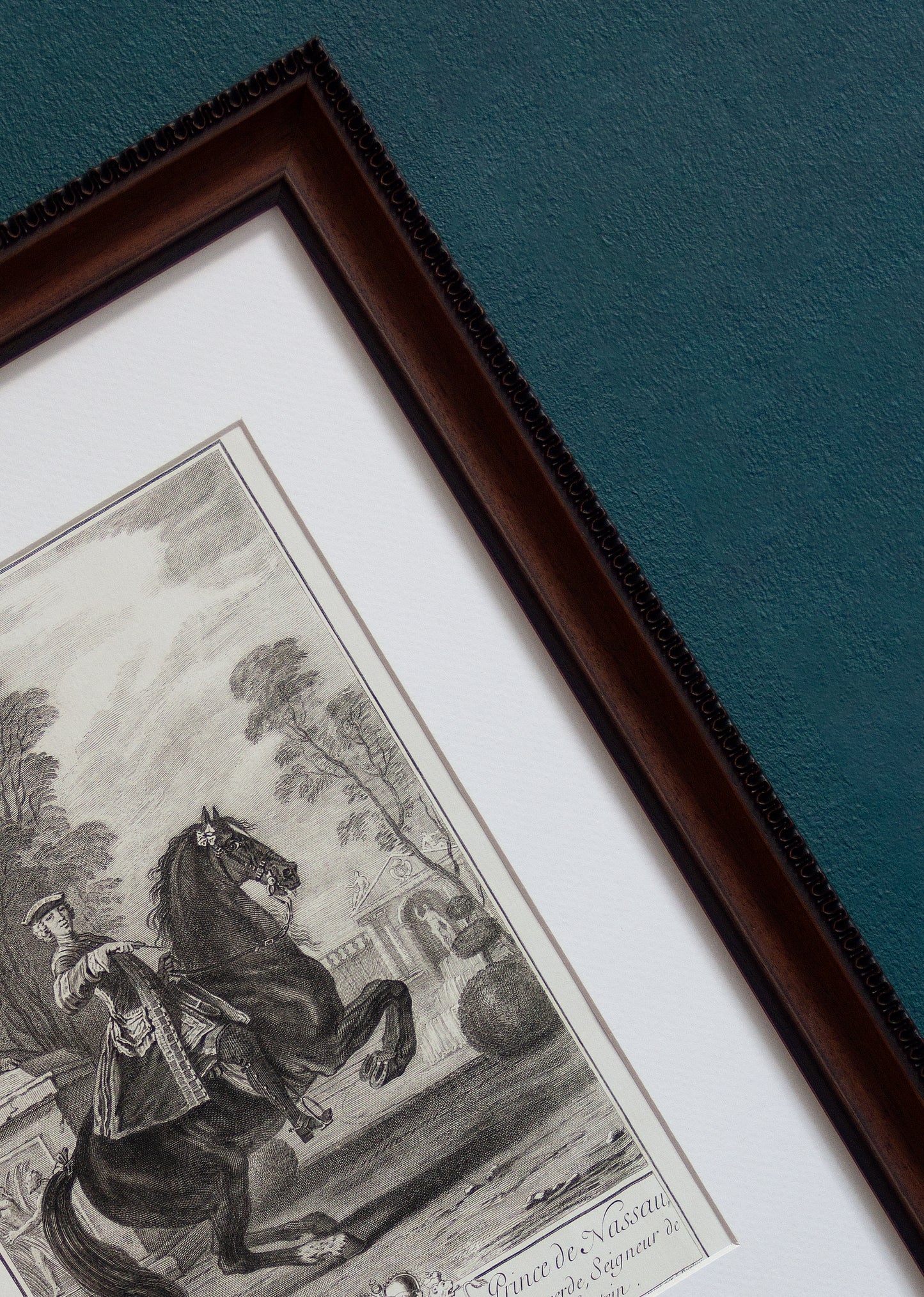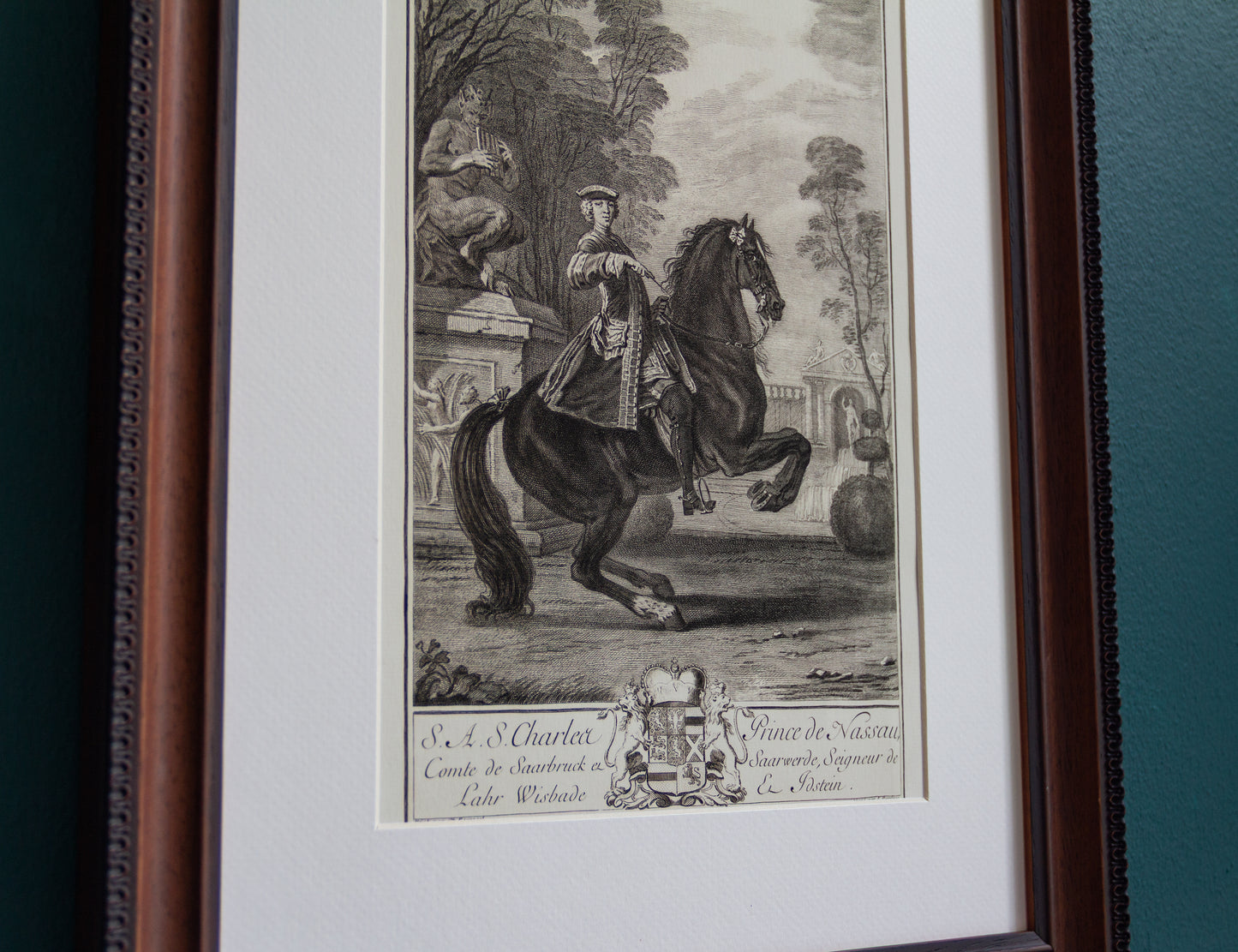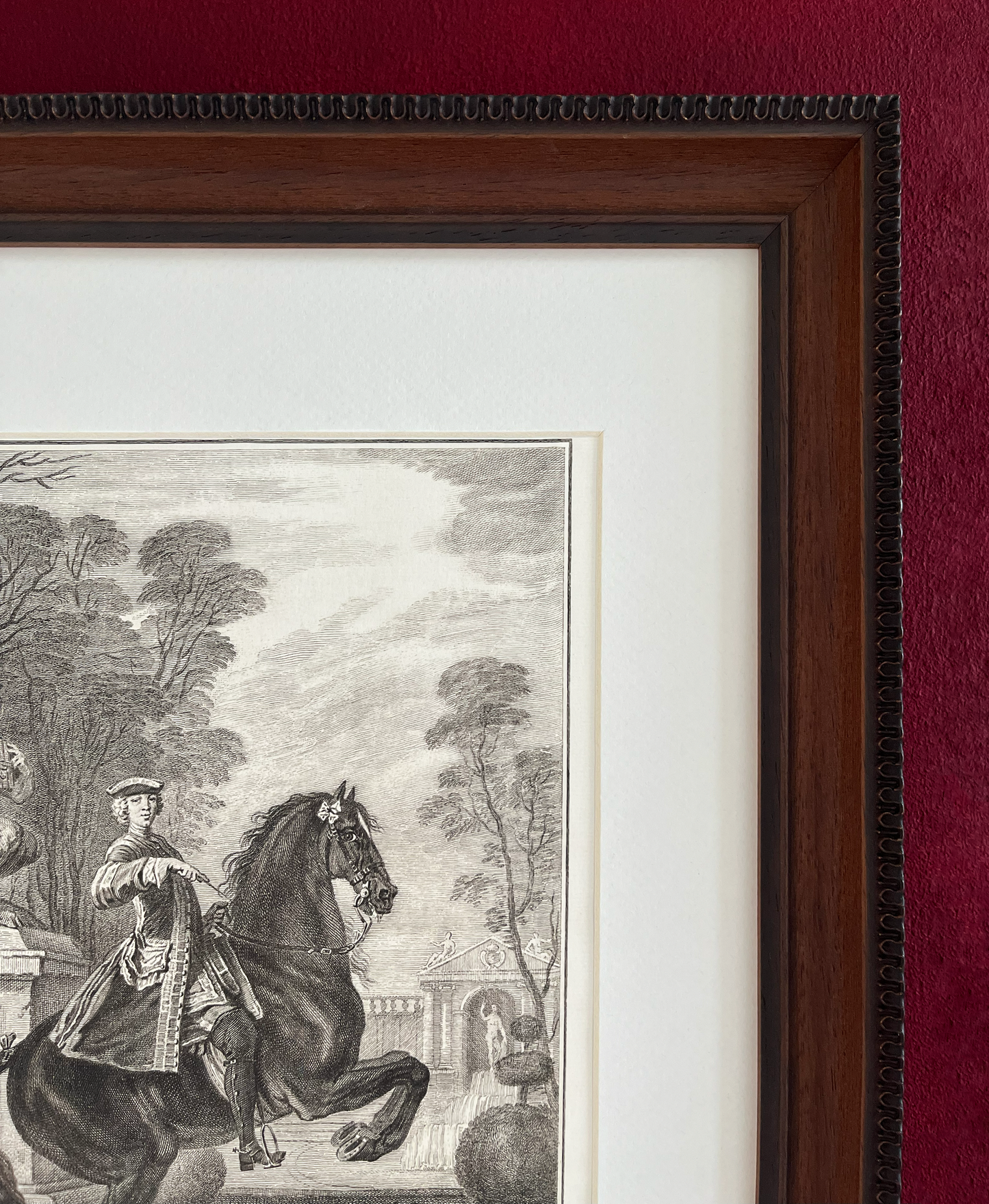De La Guérinière Print | The Courbette
De La Guérinière Print | The Courbette
The listed price is for the unframed fine art print only. Dimensions reflect the full size of the print, including any borders. The borders may appear larger or smaller than shown in product images, depending on the print size you select.
Couldn't load pickup availability
Print Quality & Materials
Print Quality & Materials
Expertly printed on luxurious 200gsm fine art paper with an elegant smooth finish, each piece is produced using a museum-grade giclée process. We use only the highest quality UV- or pigment-based inks, ensuring exceptional color depth and archival longevity: creating resistance to fading for over a century under suitable conditions.
Choosing the Right Size
Choosing the Right Size
We offer our prints in two size formats: inches and centimeters. If you’re in a region where inches are the framing standard (such as the US), we recommend selecting the inch-based sizes. For countries using the metric system, the centimeter variants are the best choice.
Our prints are designed to fit standard frame sizes, including those with or without a passe-partout (mat). For the most refined presentation, we recommend using a passe-partout, as it enhances the artwork’s visual impact.
Please note that for the common 20 x 29 cm passe-partout window, our A4 print size (21 x 29.7 cm) fits optimally.
For a 29 x 39 cm window, our 30 x 40 cm prints are the best choice.
Please note that some borders might be visible, based on the artwork. We design our products to accommodate to modern frames, but this is sometimes unavoidable based on the original dimensions of the artwork.
One of the most iconic and demanding movements in the history of classical dressage, the courbette held a place of distinction in the equestrian schools of the 16th through 18th centuries. Masterfully performed, it embodied not only technical difficulty, but a striking expression of elevation, pride, and lightness.
Whether viewed as a tribute to noble horsemanship or as a moment of the pinnacle of collection, this engraving is a rare and exceptional window into an important form of equestrian mastery. The courbette, with its proud posture and elevated cadence, remains a lasting symbol of power, precision, and elegance.
More about the movement
More about the movement
François Robichon de La Guérinière, in L’École de Cavalerie, distinguished the courbette from similar movements such as the mézair and the terre-à-terre, noting their shared two-beat rhythm but differing execution. He described the courbette as more measured and sustained - a collected gait in which the horse raises itself onto the haunches, then lowers the forehand while the hind legs follow in an even, swift, and low cadence. Crucially, both hind legs must move on the same horizontal line; neither should extend beyond the other. The result is a controlled, and highly collected movement that could be performed not only forward, but sideways, or even backwards.
A now-lost variation, in which the horse moves in the shape of a cross, was so intricate that even de La Guérinière admitted it had already fallen out of practice by his time: a mark of its extraordinary difficulty.
More about the rider
More about the rider
This engraving, attributed to the talented Charles Parrocel, features a rider whose identity is not definitively known. The coat of arms belongs to the Walramic branch of the House of Nassau, a noble family of German origin with reigning princes dating back to the 12th century. The figure may represent Charles, Prince of Nassau-Usingen (1712–1775), a known patron of the arts and publishing, who founded a printery in Wiesbaden: possibly linked to the printing of de La Guérinière’s work. Though he may have been too young to model for this plate, other likely candidates include Karl-August (1685–1753) or Karl-Ludwig (d. 1723), whose Germanic names align with "Charles."
The younger Charles, who was declared of age in 1733 (also the year L’École de Cavalerie was published) is also remembered for his economic reforms, including his unusual decree banning the consumption of coffee in order to preserve domestic wealth.




Unlock exclusive access to upcoming collections
Be among the select few to experience our newest collection before anyone else. You can sign up to our email list to receive exclusive updates and the chance to secure your pieces early.




